Gleichen
Gleichen is one castle of a group of three near Gotha in Thuringen. The word Gleichen means "similar" or "likeness" and hence the three castles, in this case Gleichen, Muhlburg, and Wachsenburg are called "Die Gleichen" as a collective.
These photos were taken in 2005.
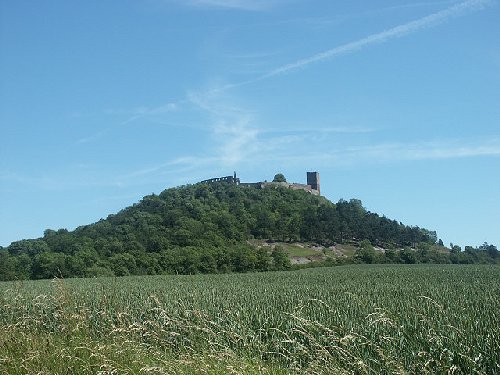
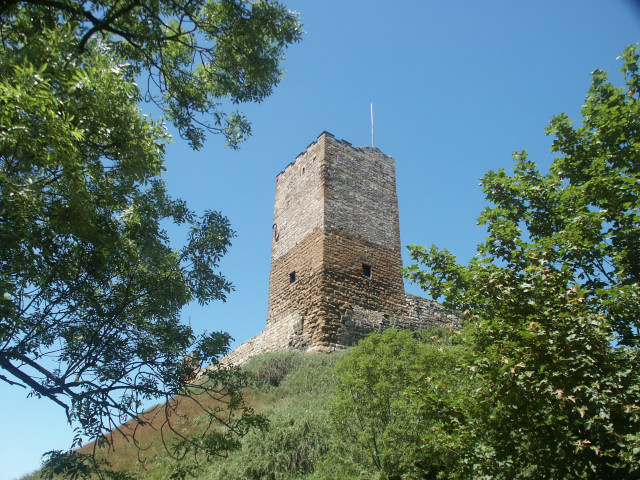
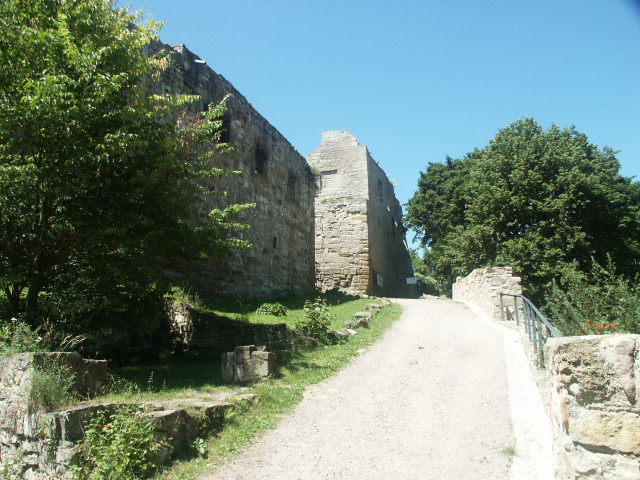
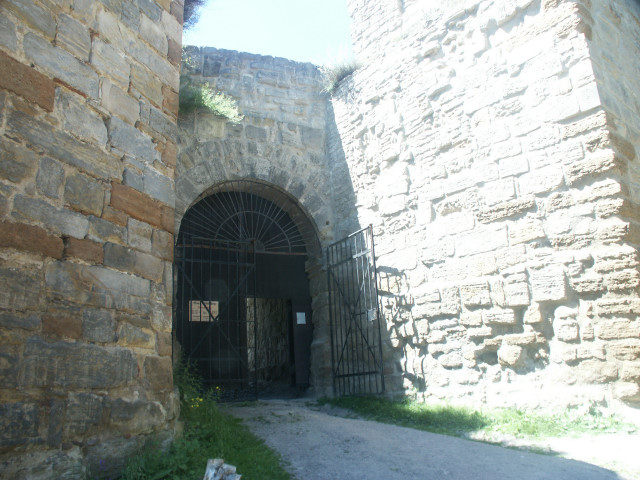
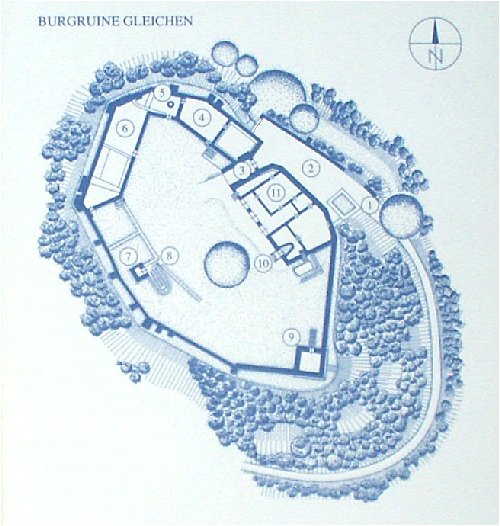
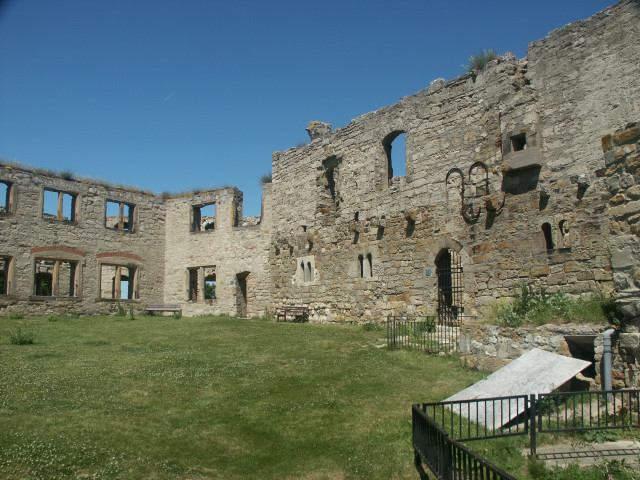
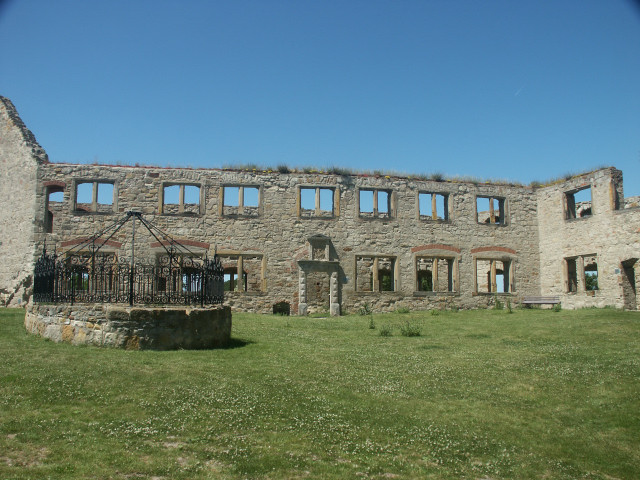
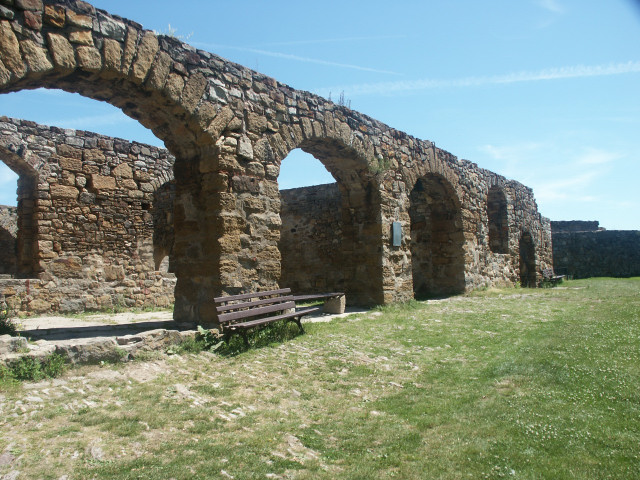
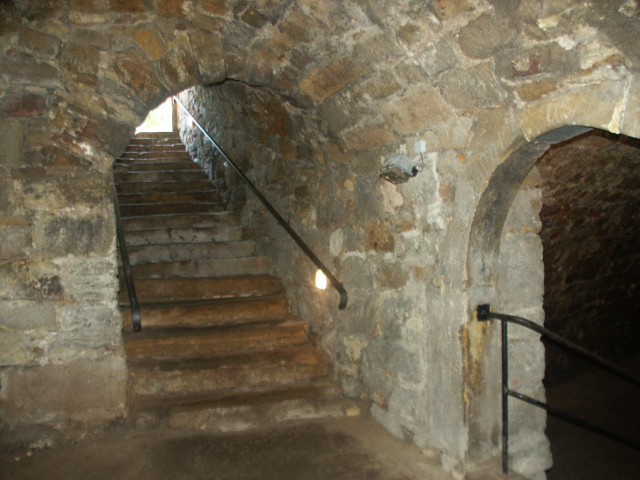
Gleichen was built around 1000 and successfully resisted a siege by the Holy Roman Emperor Henry IV in 1088. At that time it got emeshed in Saxon resistance to the empire and was significantly important enough to the resistance to be mentioned indirectly in the Swabian Chronicles. It later belonged to the Elector of Mainz, coming into possession of Prussia in 1803.
Above, a view of the castle from the fields below. The tower is close to the winding road leading to the entrance, thus helping to protect it. Any movement along the road could be easily tracked.
Left, it is obvious that the keep was in much worse shape and has since been rebuilt.
Right, the schematic of Gleichen. The keep is at the bottom of the diagram.
Below, the route into the main gate.
Left, a view of the inner ward and the walls of some of the residential areas. Note the fireplace at the upper right. Moreover, instead of using wooden floor joists placed into holes in the wall, this castle uses stone footings on which the floor joists would rest. This section here shows that a building extension came out from this wall to help protect the main gate.
The position of the lower windows implies a debris field of about 1-2 feet.
This photo is a leftward extension of the one above, providing a basic panorama of the inner ward and the residential quarters.
Right, a portion of arches that are part of the inner wall of the residential areas.
Below, a look into one of the lower levels. Gleichen has some excellent examples of subterranian sections.